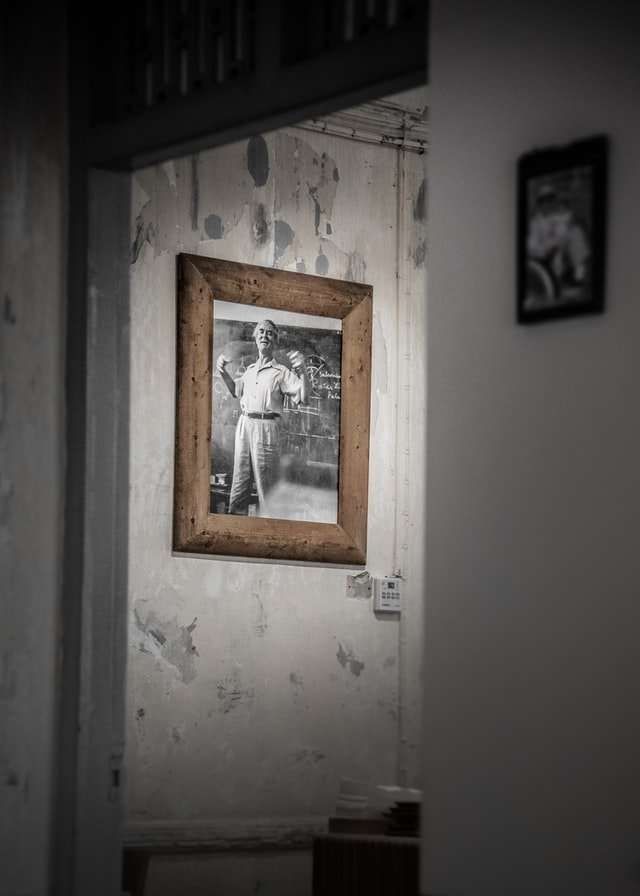I started making glitch art in 2005 because I really liked to see how far I could go with mistakes while manipulating images.
I love the way various pieces of software work, and I love to find out how they fail. This particular blog is not so much about glitch art as it is about different mistakes and errors you can make in Photoshop.
This tutorial will show you how to make glitch art with photoshop. By the end of this tutorial you will have a new knowledge about making glitch art and also have a new portfolio piece for your collection.
The basic concept behind glitch art is that you run an image through different filters, distort it in different ways, or add textures to it, in order to get the effect of “glitches.” Glitches are when a machine or program malfunctions or operates improperly and creates something un-intended. In this case we are going to use Photoshop and create our own glitches by manipulating the image, but there are other ways you can create glitch art such as using websites that take text and change it into something new (http://www.glitchtext.com/) or using video processing software (http://www.glitchvid.com/).
Glitch art goes back before computers were even invented to the days of early cinema when they would feed films they made into projectors backwards (http://www.youtube.com/watch?v=TKZ-2W8Q3aY) causing what we now call “glitches” although they were not called that at that time.*
Glitch art has been used in films such as ”
The Glitch Art community is all about the blunders that can occur when you manipulate images in Photoshop. They call them “glitches” because the end result looks like it might have occurred as a result of a mistake, error or malfunction.
As a glitch artist you can use tools such as: filters, layer settings and layer masks to tweak your image. By doing this you create something out of nothing!
There are different techniques artists use, but the most common way is to open your image in photoshop, duplicate the background layer and apply a filter to it (for example noise, gaussian blur or even just add noise). Then change the opacity of the top layer to get the desired effect. This can be done multiple times to create interesting effects.
Glitch art is not just about making mistakes, but also about being creative and trying new things. It’s about experimenting with things you think may not work, then finding out that they do in fact work!
Have you ever wondered what is inside a jpeg file? I sure did and it turns out that they are just conglomerations of bits and bytes. The same way we make pictures in photoshop, we can make errors that become beautiful glitch art. We can use them to transform the images in ways that we couldn’t before. And it’s dead simple!
Take for example this picture of vines:
Now if I was to delete some of these pixels and replace them with others, then we’d get a very interesting result:
The possibilities are endless! My favorite thing to do is take multiple pictures, then select parts of each one to mix together. For example, I took a picture of my cat, and another of one of my favorite buildings, combined them, and added a bit of color so that the colors would blend together:
The results are always surprising and beautiful. Playing around with different colors and different combinations can result in many different kinds of glitches that look completely unique. You can even add your own touch like I did with the colorization to make it look even more unique! Glitch art is an amazing form of expression because each individual glitch makes your artwork unique from everyone else’s. And its also fun!
To start making some glitch art
If you are a digital artist, or a digital photographer, you have probably experienced the frustration of making a mistake in an image that cannot be undone. The classic example is when your finger slips on a button and as a result, your photo loses all of its color and is left in black and white. In Photoshop, there is no way to reverse this permanent change. If you have ever had this happen to you, then you are aware of how annoying this can be.
After you have made an irreversible change to an image or photo, though, there is still hope for you to make it into something interesting. This process is called glitch art. Glitch art takes advantage of the mistakes that we make when editing images and it turns them into creative pieces of art.
Glitch art, also known as datamoshing, is a technique that uses image compression to add glitches to images and videos. Glitches can be added through different methods, but the most common is simply saving an image as a low-quality JPEG file.
The photograph below contains many glitch effects:
The red and purple colors are caused by pixels being duplicated or deleted. These are the most common “glitches” in glitch art.
The white horizontal line appears when the image data is compressed too much, which causes the lines of color to separate from each other. The black horizontal line is similar, but occurs on a smaller scale when an individual pixel is compressed too much. This causes one color to be split into two separate colors. This can be seen in the white background where the blue of the sky has been separated into its own color channel.
These effects can be used to create interesting photographs with unique qualities.”
A glitch is an error or fault in a system. When we talk about computer glitches, we are referring to errors in the programming of the computer that cause unexpected results. Glitches can be minor and annoying, like when your internet browser keeps crashing, or they can be more serious and cause physical damage like blowing out your computer’s motherboard.

